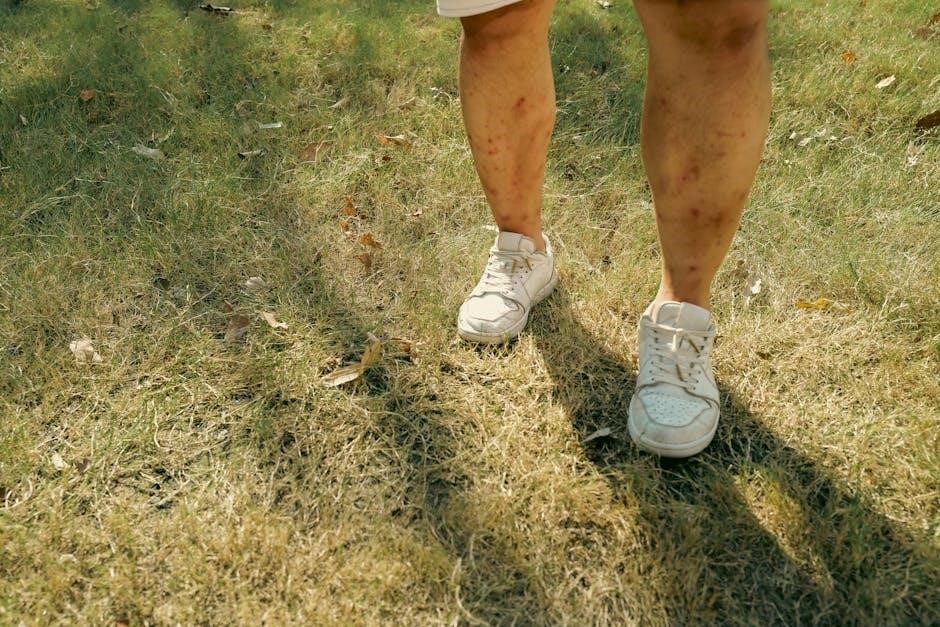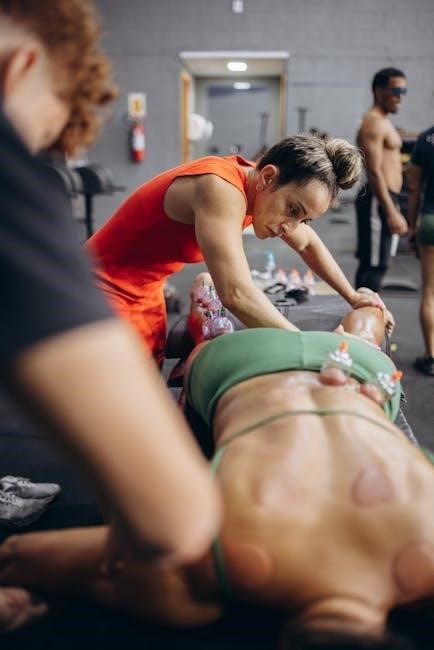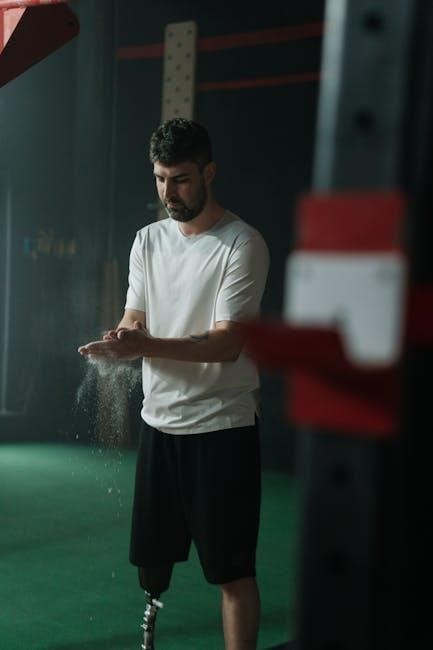Start with gentle exercises and stretches for calf strain rehab, using a personalized pdf worksheet to guide your recovery and prevent future injuries with a comprehensive program of exercises.
Understanding the Importance of Rehabilitation
Rehabilitation plays a crucial role in the recovery process of calf strain injuries, and a well-structured program is essential for optimal healing. The goal of rehabilitation is to restore strength, flexibility, and function to the affected muscle, while also reducing the risk of future injuries. A comprehensive rehabilitation program, outlined in a calf strain rehab exercises pdf, typically includes a combination of exercises, stretches, and strengthening techniques tailored to the individual’s specific needs and injury severity. By following a personalized rehabilitation program, individuals can expect to achieve significant improvements in their overall muscle function and reduce their risk of re-injury. Effective rehabilitation also requires a thorough understanding of the underlying causes of calf strain injuries, including overuse, poor conditioning, and biomechanical factors. With a clear understanding of these factors, individuals can take proactive steps to prevent future injuries and maintain optimal muscle health. Regular exercise and stretching can help to improve muscle flexibility and strength.

Causes and Prevention of Calf Strains
Calf strains are often caused by overuse and poor conditioning, using a pdf guide to prevent future injuries with exercises.
Tendon Problems and Overuse Injuries
Tendon problems often arise as a result of prolonged overuse, fatigue and lack of conditioning in endurance-based activities such as long distance running, which can be prevented with a well-structured pdf guide.
The program should include exercises that promote blood flow and reduce muscle tension, helping to prevent overuse injuries and tendon problems.
A comprehensive pdf worksheet can provide individuals with the necessary tools to prevent and treat tendon problems and overuse injuries, reducing the risk of recurrence and promoting overall muscle health.
By incorporating exercises and stretches into their daily routine, individuals can reduce their risk of developing tendon problems and overuse injuries, and improve their overall muscle function and performance.
Regular exercise and stretching can help to prevent tendon problems and overuse injuries, and a pdf guide can provide individuals with the necessary information to create a personalized exercise program.
With the right exercises and stretches, individuals can reduce their risk of tendon problems and overuse injuries, and improve their overall health and wellbeing, using a pdf worksheet as a guide.
The exercises and stretches outlined in a pdf guide can help to promote healthy tendons and muscles, reducing the risk of overuse injuries and tendon problems.
A well-structured pdf guide can provide individuals with the necessary information to prevent and treat tendon problems and overuse injuries, promoting overall muscle health and wellbeing.
By following a pdf guide, individuals can reduce their risk of tendon problems and overuse injuries, and improve their overall health and wellbeing, with a comprehensive exercise program.
The pdf guide can provide individuals with the necessary tools to prevent and treat tendon problems and overuse injuries, reducing the risk of recurrence and promoting overall muscle health.
Overall, a pdf guide can be a valuable resource for individuals looking to prevent and treat tendon problems and overuse injuries, promoting overall muscle health and wellbeing.

Rehabilitation Program Guidelines
Follow a structured pdf guide for calf strain rehab, with exercises and stretches to promote recovery and prevent future injuries, using a personalized program with guidelines.
Phase-Based Rehabilitation Timeline
A phase-based rehabilitation timeline is crucial for effective calf strain recovery, typically taking 6-12 weeks depending on the injury severity. The rehabilitation program is divided into phases, each with specific exercises and stretches to promote healing and prevent future injuries. A personalized pdf worksheet can guide the recovery process, providing a detailed timeline and exercise plan. The timeline is illustrated in the rehabilitation program, outlining the progression from introductory exercises to advanced strengthening techniques. After a grade 1 injury, rehabilitation can usually begin at phase three, while grade 2 and 3 injuries require a more gradual approach. The goal of the rehabilitation timeline is to ensure a comprehensive and structured recovery, allowing individuals to return to their normal activities and prevent recurrence of the injury. By following a phase-based rehabilitation timeline, individuals can effectively recover from calf strain and maintain optimal muscle function.

Effective Exercises for Calf Strain Rehab
Exercises include towel stretches and balance techniques, outlined in a personalized pdf worksheet for effective calf strain rehab and prevention of future injuries naturally.
Introductory Exercises for Acute Pain Relief
Introductory exercises play a crucial role in providing acute pain relief for individuals suffering from calf strains. A personalized pdf worksheet can guide users through gentle stretches and exercises, such as towel stretches, to help alleviate pain and discomfort. These exercises are designed to be low-impact and easy to perform, making them accessible to individuals with limited mobility. The goal of introductory exercises is to promote blood flow, reduce inflammation, and improve range of motion in the affected area. By incorporating these exercises into their daily routine, individuals can experience significant pain relief and set the stage for a successful recovery. Additionally, a pdf worksheet can provide users with a clear understanding of proper exercise technique, helping to prevent further injury and promote optimal healing. With a focus on gentle, low-impact movements, introductory exercises can help individuals take the first step towards a full recovery from calf strain injuries. Regular practice and patience are essential for achieving optimal results.

Progressing to Advanced Strengthening Techniques
Advanced techniques include resistance exercises to strengthen calf muscles and improve overall function and stability.
Illustrated Exercises and Stretches for Comprehensive Rehab
Illustrated exercises and stretches are essential for a comprehensive rehab program, providing a clear understanding of proper technique and form. The pdf worksheet includes detailed illustrations and descriptions of each exercise, allowing individuals to follow along and track their progress. Exercises such as calf raises, toe walks, and heel raises are included, as well as stretches like the towel stretch and wall push-up. These exercises and stretches are designed to be progressive, allowing individuals to gradually increase intensity and difficulty as they recover. The illustrated guide also includes information on proper warm-up and cool-down techniques, as well as tips for preventing future injuries. By following the illustrated exercises and stretches, individuals can ensure a safe and effective recovery from calf strain, and return to their normal activities with confidence. The exercises are also customizable to meet individual needs and goals, making it a valuable resource for anyone recovering from a calf strain.
